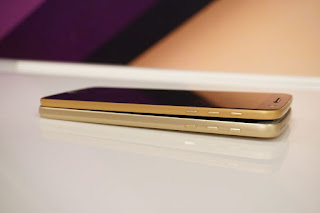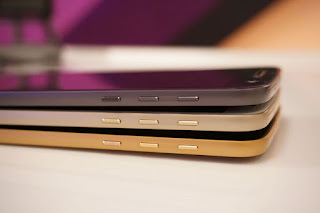BY RAYMOND WONG
As revealed at Lenovo Tech World, the two Android 6.0.1 Marshmallow-powered smartphones continue the trend of modular phones started by LG's G5.
Through a 16-dot magnetic pin connector located on the back of the phones, users can attach add-on modules such as a JBL speaker, Kate Spade-branded battery pack, or InstaShare Projector to enhance their capabilities beyond the internal specs.
JBL speaker module
Projector module
Both the Moto Z and Z Force are respectable flagship phones with 5.5-inch Quad HD displays (2,560 x 1,440 resolution with 535 ppi), Qualcomm's latest Snapdragon 820 processor, 4GB of RAM and 32GB of 64GB of storage (expandable via microSD up to 256GB).
There's a fingerprint sensor below the screens and the phones come with the new reversible USB Type-C port.The only real differences between the phones are the dimensions, display durability, rear cameras and battery life.
The Moto Z comes with a 13-megapixel rear camera with f/1.8 aperture, laser autofocus, OIS and a dual-LED flash, while the Moto Z Force has a higher resolution 21-megapixel camera, which also comes with a f/1.8 aperture, laser autofocus, OIS and dual-LED flash. Both phones have a 5-megapixel front-facing camera.
The slightly thicker and heavier Moto Z Force (0.28 inches versus the 0.20-inch Moto Z) comes with a larger 3,500 mAh battery. The Moto Z only features a 2,600 mAh battery.
The Moto Z Force also has a more durable shatterproof display like the Droid Turbo 2, which means the screen is shielded by several additional layers to prevent cracks when dropped.
At a media preview event in New York City, I got to try out the phones and I walked away impressed with the sleek metal and glass designs and smooth performance.
In particular, the Moto Z is so pretty. It's ultra-thin at 0.20 inches thick and I did a quick bend test and the phone didn't flex at all. Good stuff.The software was as expected. Since the phones are Verizon-exclusives in the U.S., they come with tons of pre-installed Verizon apps that you can't remove. Ugh.
You'll also notice in the photos the two phones don't have headphone jacks. Yep, Motorola ditched the headphone jack before Apple. Instead, users will have to pick up a pair of USB Type-C headphones or go wireless with Bluetooth headphones.
The modular "Moto Mods" as the company is calling them are easy to attach and detach.
I didn't get to try out the cameras too much outside of the showroom, but from what I saw, the cameras are quick to launch, autofocus and shoot. I'm not in love with the huge camera "hump" on the back, but I can see it was a pragmatic design choice for two reasons: better camera sensor and a way to hold the modules in place.
The fingerprint sensors are also fast and responsive — they appear to be the same ones used on the Moto G4 and G4 Plus, which is great.
Based on everything I've seen so far, the Moto Z and Z Force look to be excellent phones.
Moto z is only 5.2mm thick (top) versus the moto z force.
The moto z is the thinner than the iphone 6s.
comes with USB type-c ports.
Modules are easily added on via magnetic contacts.
comes in several beautiful colors.
13-megapixel camera on the moto z and 21-megapixel camera on the moto z force.
Modules do add more bulk though.
The JBL speaker module cost $80 and comes with a kickstand.
kind of a fingerprint magnet.











No comments:
Post a Comment